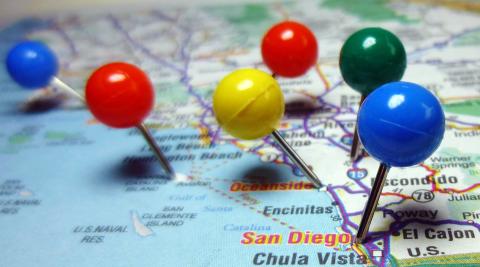
Q:Are any utilities allowing customers to share their location on a mobile device to report a power outage?
A:We’re not aware of any utilities that offer location-enabled outage reporting, but many organizations outside the energy industry allow customers to share their location on a mobile app to complete a task.
For example, Lyft and Uber customers use this feature to hail a ride, and AAA customers can use location services to request roadside assistance. Incorporating this capability into your mobile app is a valuable way to elevate the user experience and provide an experience that’s comparable to that of other companies your customers interact with.
Although it’s not exactly location-enabled outage reporting, several utilities offer a My Location feature on outage maps, and KUBRA, a popular utility customer experience management system vendor, offers an incident-reporting product that allows customers to report streetlight outages and other infrastructure issues from their current location.
Utility outage reporting
Most utilities allow customers to report an outage via a variety of channels, but customers either manually input their address or it’s pulled into the report through other verification information (such as the account number or phone number).
Orange & Rockland briefly supported a location-enabled reporting tool. Customers were able to use geolocation to report outages and attach photos of damage and send them to the utility. To do so, customers needed to enable location services so their coordinates could be used to pinpoint the damage. KUBRA (iFactor at the time of development) partnered with Orange & Rockland for the feature.
According to Scott Gruber, project specialist in the utility’s digital communications department, the app was retired when Orange & Rockland merged with Con Edison. The merged digital team prioritized creating consistent website and app experiences across the two entities and didn’t have the time or resources to support the feature. However, Gruber is interested in restoring this capability in the future.
Beyond Orange & Rockland’s app, the closest example we have to location-enabled outage reporting is when customers report outages straight from the utility’s outage map (figure 1). However, in the examples we’ve seen, customers can only make a report for known outages that show up on the map, and when they opt to make a report, they must then sign in and complete the standard outage-reporting form.
Figure 1: Westar Energy and PSEG Long Island outage reporting
Location-enabled utility features
The Southern California Gas Co. app allows customers to share their location to find a nearby pay station (figure 2). Utilities could adapt this type of feature to outage reporting.
Figure 2: The SoCalGas app
KUBRA’s IncidentWatch product uses location-based reporting. According to the KUBRA site:
The IncidentWatchTM map gives you a simple, intuitive way to report problems with outdoor lights, utility poles, streets, and other issues with visual representations of asset locations and issue reports. The map also includes a search function and integrated location-based services that allow the map to automatically move to a user’s current position.
We haven’t seen a similar feature included in KUBRA’s outage-reporting products.
Nonutility location-enabled reporting
While we haven’t seen much of this technology deployed among utilities, it’s common in nonutility mobile apps and websites. Ride-share companies Lyft and Uber offer apps where location-based ride requests are central to their functionality. Customers simply select their pickup location and get an estimated pickup time. The user experience is streamlined because the app automatically inputs the customer’s current location (figure 3).
Figure 3: Lyft’s ride-share app
One example of location-enabled reporting is the AAA mobile app. A location-based feature is a great option for drivers seeking help because they often need assistance away from home and on roadsides where they may not know the address.
When AAA members open the app and select the Roadside Assistance feature, AAA automatically brings up the driver’s location (figure 4). Drivers can then use that location or, if they prefer, easily seek assistance over the phone. When a driver sets their breakdown location, they then continue through a couple of additional steps, indicating the type of vehicle they’re driving as well as what type of assistance they need.
Figure 4: AAA’s Roadside Assistance feature
All of AAA’s steps are clear and easy to move through. A utility outage-reporting feature could emulate this example to create a simple, customer-friendly reporting tool.
Other examples that may provide some ideas for how to create a great location-based outage feature include GrubHub and Strava.
GrubHub allows customers to use their current location to view which food delivery options are available in their area. We like that this app customizes the experience based on the user’s location. An outage-reporting tool could offer a customized message depending on the customer’s location, such as whether this is a known outage, whether crews have been dispatched, or estimated times of restoration.
Strava is a running app that allows users to share their location with trusted contacts. Via the app, a runner sets their location at the start of a run and their trusted contact receives a notification by text (figure 5).
Figure 5: Safety features of Strava’s running app
The contact can then track the runner’s progress and receive a follow-up text message once the run is complete (figure 6).